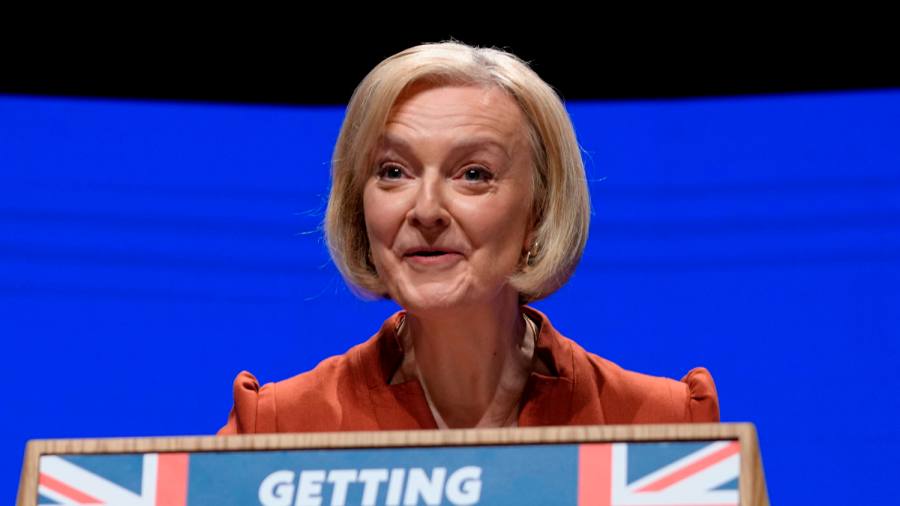Quantifying Britain’s moron risk premium
6 min read
Britain has finally got its longed-for exceptionalism in recent weeks, experiencing a yadda yadda yadda (you know the story).
Not a whole lot of value has emerged from the past month’s omnishambles, but one valuable development is the coining of “moron risk premium” — in short, the extra money the UK is paying to borrow because its leaders are a few sandwiches short of a tea party.
TS Lombard’s inimitable Dario Perkins appears to have coined the term …
The problem isn’t that the UK budget was inflationary, its that it was moronic. And a small open economy that seems to be run by morons gets a wider risk premium on its assets – currency down, yields up https://t.co/Oyc8rIOc2h
— Dario Perkins (@darioperkins) September 24, 2022
… which is now pretty widespread.
Section I: The signs you might have MRP
If you’re just getting to grips with MRP, here’s what we’re talking about. The yield on 30-year gilts has shot up far more quickly than other countries’ equivalent bonds since Liz Truss and the wild bunch took power in early September:
In case you’re worried this focuses unfairly on the time since the author joined Alphaville Truss entered Number 10 (on September 5), here’s a year-to-date view:
As that graph shows more clearly, the UK has a potential partner in Italy, whose own MRP peaked in mid-June as former prime minister Mario Draghi’s leadership fell into crisis.
Of course, 30-year gilts are arguably special because they’re where the Bank of England chose to intervene, in part because of their role in liability-driven investment structures. The picture is a little better on 10-years, but still ugly — here’s the spread versus bunds since the start of the year:
Italy has hewed closer to the pack over recent weeks despite replacing the technocratic, market-friendly former European Central Bank president with a party that, in the words of the FT, has “few obvious finance minister candidates”.
Parallels between Italy and the UK look increasingly pertinent given the political permacrisis at Westminster. Interestingly, the “fiscal event” marked one of the few times, looking back to the turn of the century, that the spread between 30-year gilts and the equivalent bunds was higher than the Italy/Germany spread:
The other side of the event was its effect on interest rate probabilities. Here’s how the overnight index swap-implied expectations for the change in rate by next summer has change for the BOE/ECB/Fed during the Truss age:
Even more so than with sovereign bonds, getting a clean read here is… a struggle. There are lots of reasons why rate expectations shift, especially this far out. So we’ll focus on gilts — but given interest rate increases have a rapid and painful impact on the roughly 30 per cent of people who live in a mortgaged property with a variable rate, it’s worth considering the moron impact here as well.
Part Deux: Pricing MRP
By scrolling further, you accept that you understand the following statement: financial markets are complicated and movements in something as integral as gilts will inevitably be the product of a combination of factors, yadda yadda yadda yadda…
LET’S CRUNCH SOME NUMBERS.
Getting a clean read on MRP is hard. For starters, we have to pick what is non-moronic. Inevitably, some readers are going to be pretty mad if we pick Germany and the European Central Bank. Sorry, but we’re gonna do just that: our rationale is that macro conditions elsewhere on the continent are more comparable with the UK than those of the US.
On this basis, we compared average 2022 30-year gilt/bund spreads up until July 7 (when Boris Johnson announced he would step down), with the period thereafter. Conveniently, the pre-BoJo exit spread was almost exactly a percentage point:
Let’s assume (as our early charts indicate) that, from a markets perspective, Johnson was not considered a moron. That 1 percentage point can be seen broadly to encompass a range of generalised factors that make the UK a less attractive place to buy debt from than Germany. We’ll call it UK risk premium, or UKRP.
Taking that away from the spread, we can see MRP creeping in over the summer then going Super Saiyan last month:
This formula is sufficiently robust for our purposes even though, for reasons related to protecting the chartmaker’s sanity, we’ve limited the view to end-of-day prices. Key takeaway: looking at the so pre-MPC period from the September 5 to 21, the Truss administration carried a baseline MRP of about 70bps.
In the spirit of r-star, we’ll call this T-star.
Here’s the MRP daily change with annotations for key events:
Unfortunately, news and markets don’t move in 24 hour shifts. Take the chancellor’s defenestration: although the actual sacking took place on the Friday, October 14, it was pretty clear a day before that Kwarteng’s loaf was toasted. And, on the day of his exit, the big move only occurred following Truss’s dismal press conference.
Still, in bold strokes:
-
The Fiscal Event/mini-Budget was worth about 1 percentage point of MRP. (We’re working on the basis that the moves from September 23 to the 27 were driven by the Event rather than being BOE linked — which isn’t a consensus opinion, though the timing of moves appear to support this reading.)
-
Bank intervention was equivalent to a 1 percentage point reduction of MRP
-
Assumptions of Kwarteng’s sacking were equivalent to negative 0.2 percentage points of MRP, so a “kwarteng” is roughly 20bps
Let’s put this into practice. As of Tuesday, we were still –1 assumed de-kwartengs. Gilt yields are falling at the long-end today, suggesting we might be re-approaching T-star. Analysts are calling this a “sticky moron premium”.
Lyn Graham-Taylor, a Rabobank senior rates strategist, told FT Alphaville:
It’s not permanent. But it’s probably a bit more complicated than just being tied purely to Liz Truss. There’s probably a few other things in there, like how is this gonna play out? Who’s going to be the next Tory leader? What policies are they going to have? What’s the outlook for the next election, etc, etc. I think investors have relatively short memories in terms of how long they priced these things in for.
Getting down to brass tacks, how much does a kwarteng cost?
The Office for Budget Responsibility’s ready reckoner suggests that, from 2022/23 onwards, each extra percentage point on gilt rates would cost £16.8bn over the medium term (ie half a decade):
Applying this formula, the amount of real-terms additional spending cost incurred by Fiscal Event is about £16.8bn. One kwarteng costs £3.4bn per year over a typical five year parliament.
Following T-star, if Liz Truss were PM for the next half-decade it would cost the country £11.8bn — almost £2.4bn a year, or £6.4mn a day. (This doesn’t quite line up but you get the idea.)
Act III: The Red October for Hunt
MRP is a fun-ish notional concept. Rule by injudicious ineptitude has many consequences, but if that government is relaxed about deficits what difference in the round is a few extra billion per year?
Unfortunately for the people of Britain, the chancellor is a now Jeremy Hunt, A Very Serious Grown Up Politician Who Will Sort This All Out.
In the nonsense world of obsessive book balancing that is austerity, £11.8bn/£2.4bn p/a of T-star MRP is rather more ominous! Barclays analysts reckon Hunt is likely to announce £30bn more of cuts — the FTAV calculus would suggest a large chunk of this could be found just by shedding the moron risk premium.
Looking at it another way, here via Barclays/the Institute for Fiscal Studies are some examples of other things Hunt may be eyeing for cuts:
Following this approach, removing the T-star MRP would provide savings equivalent to a 5 per cent cut in public service spending. The former path is more likely than the latter to be a vote winner. After all, cutting public service spending affects loads of people, whereas Liz Truss is singular.
As mentioned above, it’s not clear that Truss herself is the issue here but, given the chance, it seems like removing her is potentially a fiscally prudent move, and certainly one Hunt should be considering as he draws up his spending plans.
In other words:





